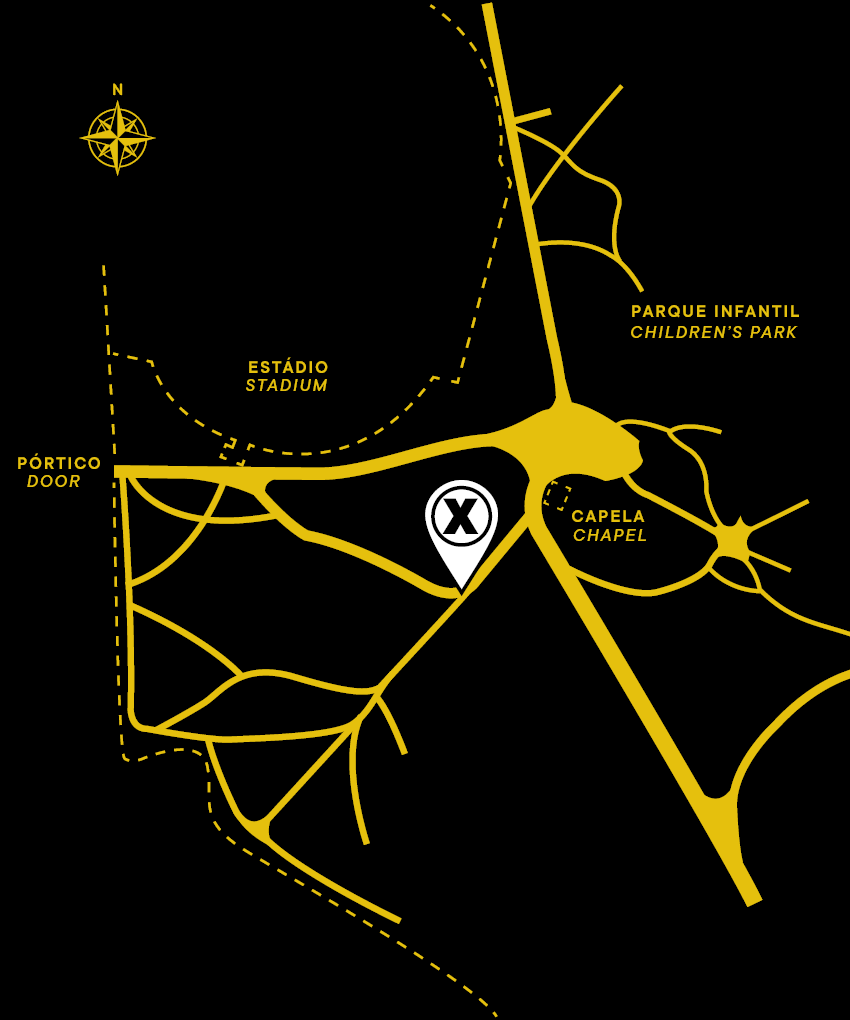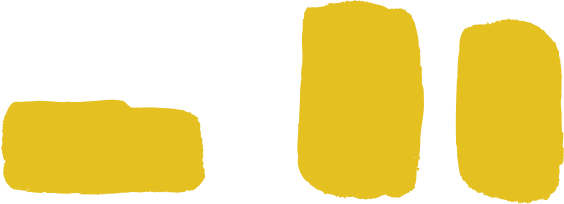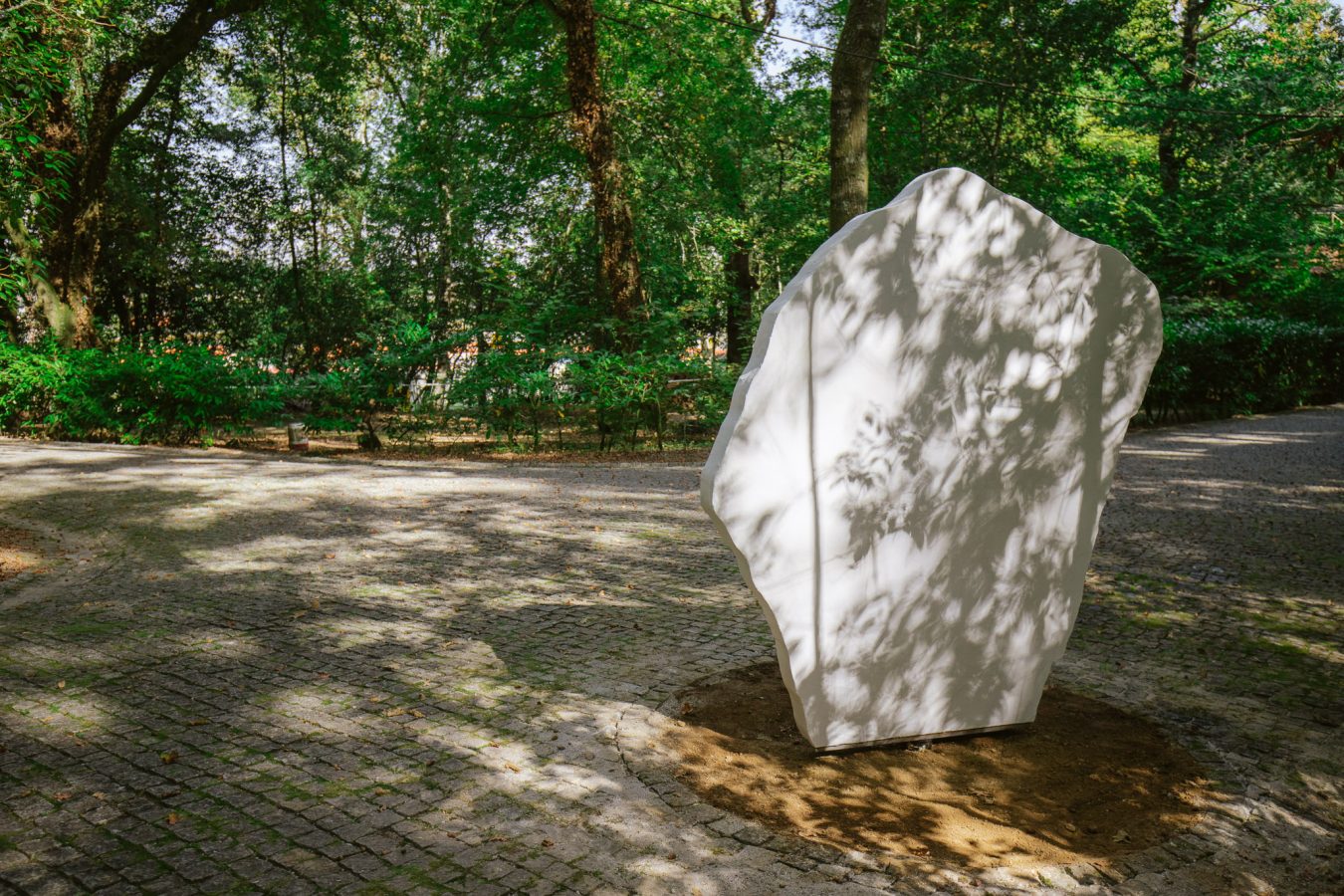
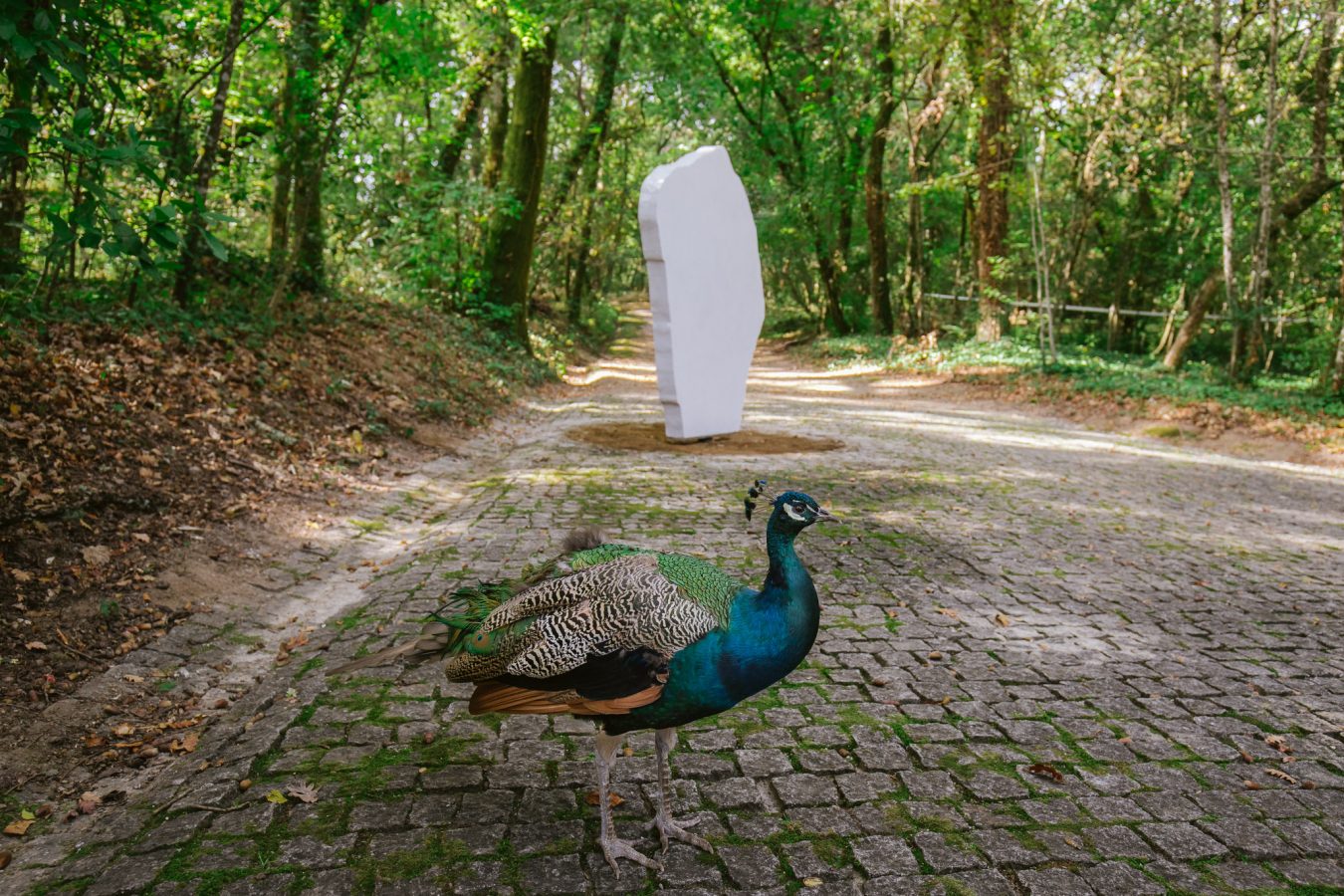
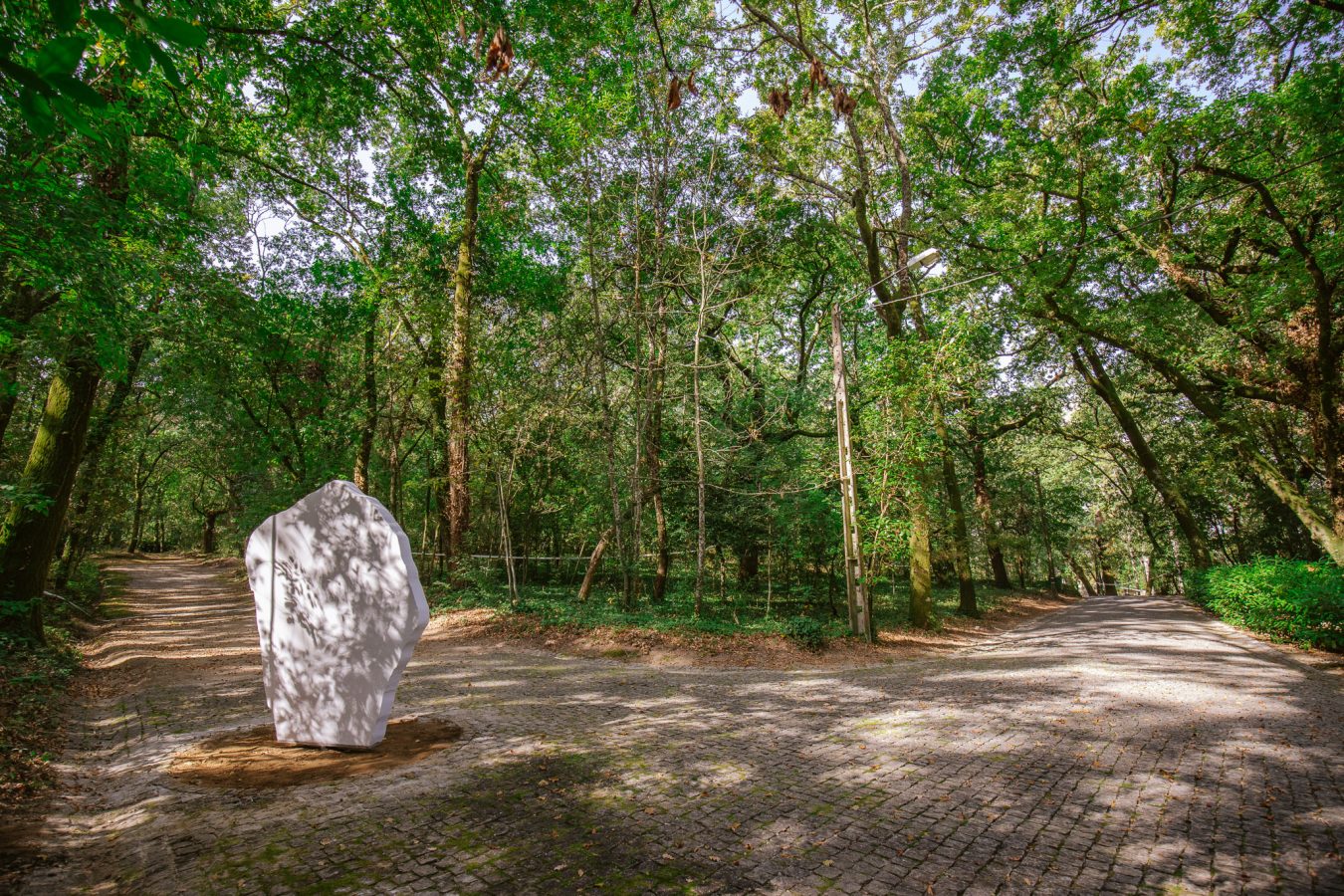
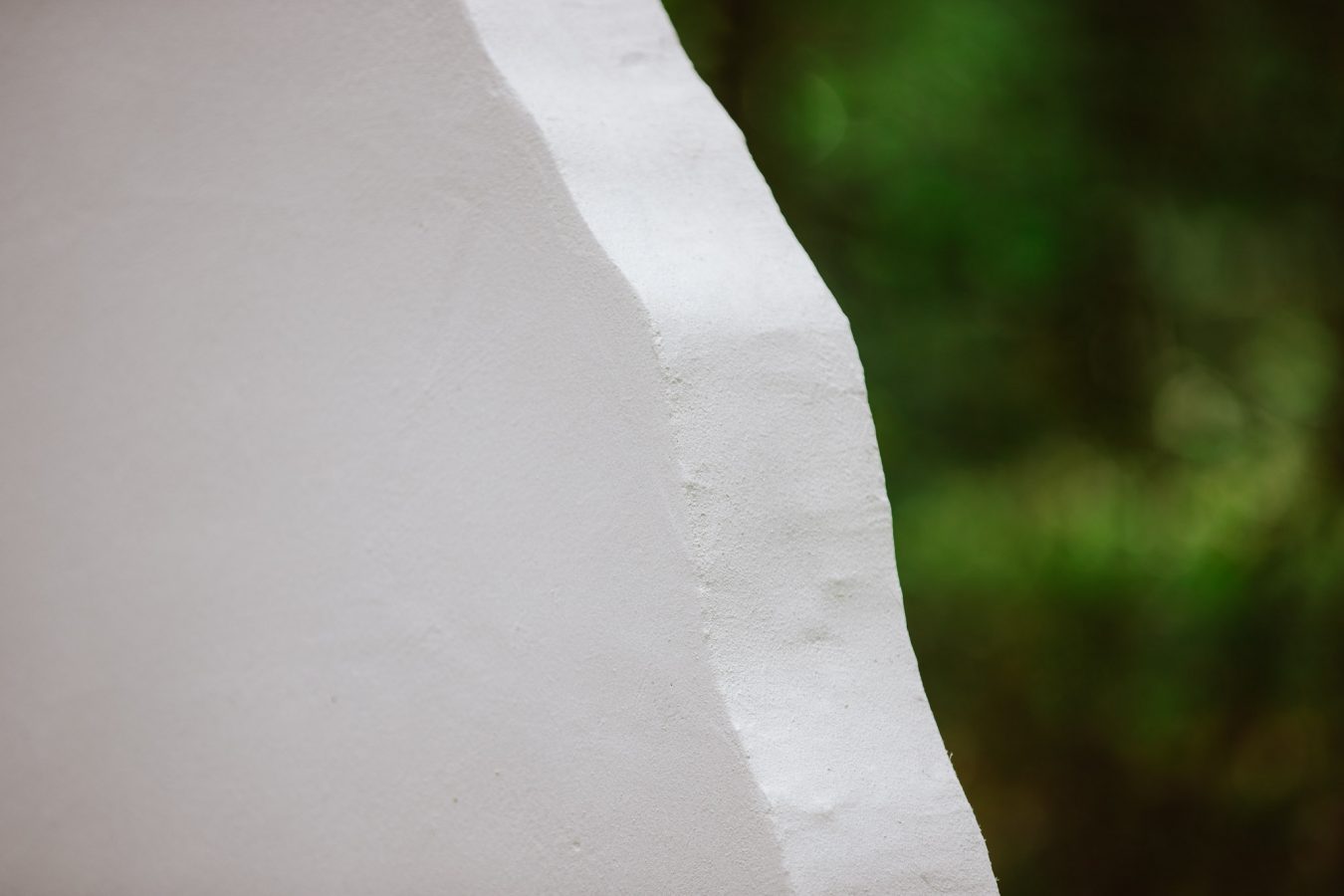
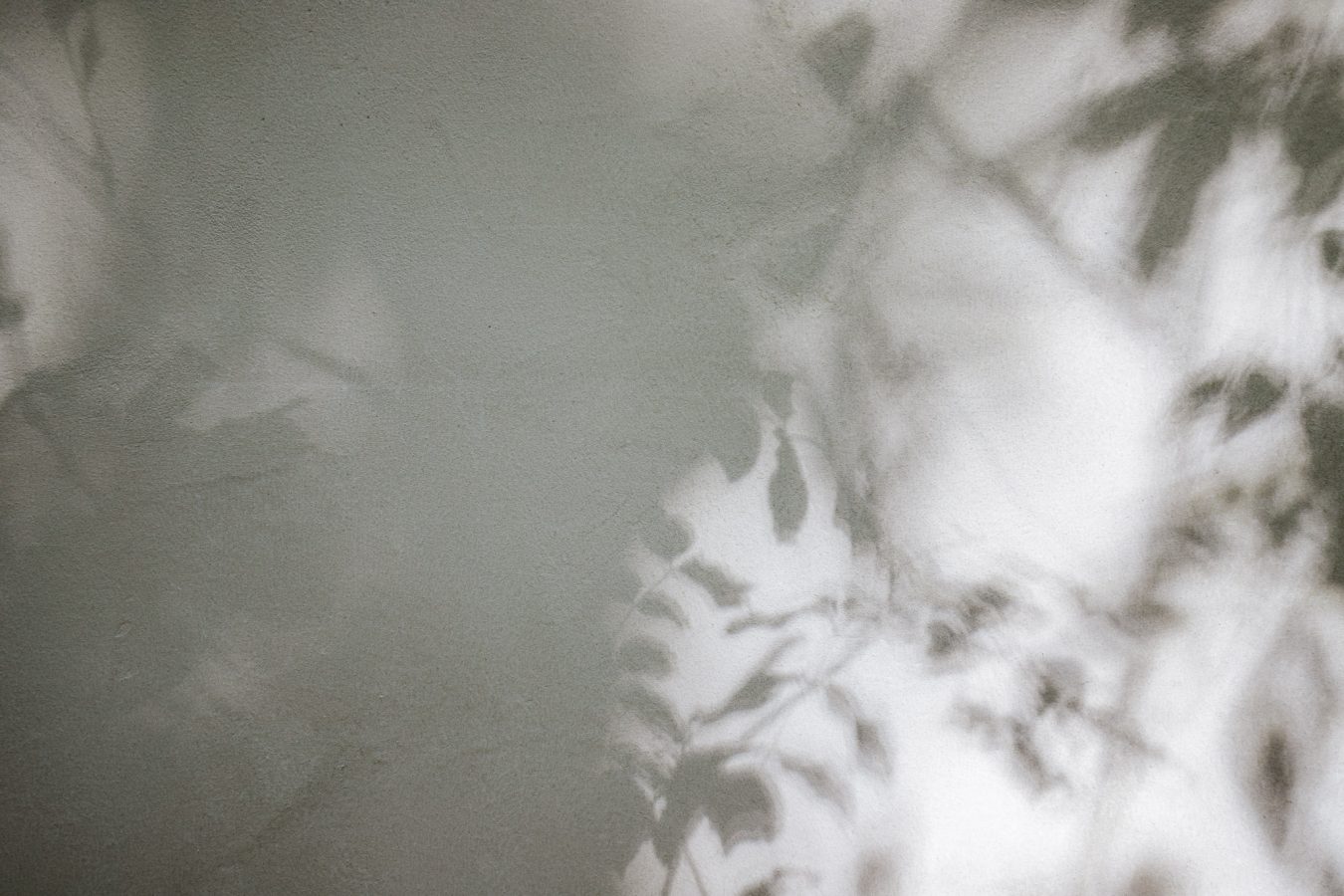
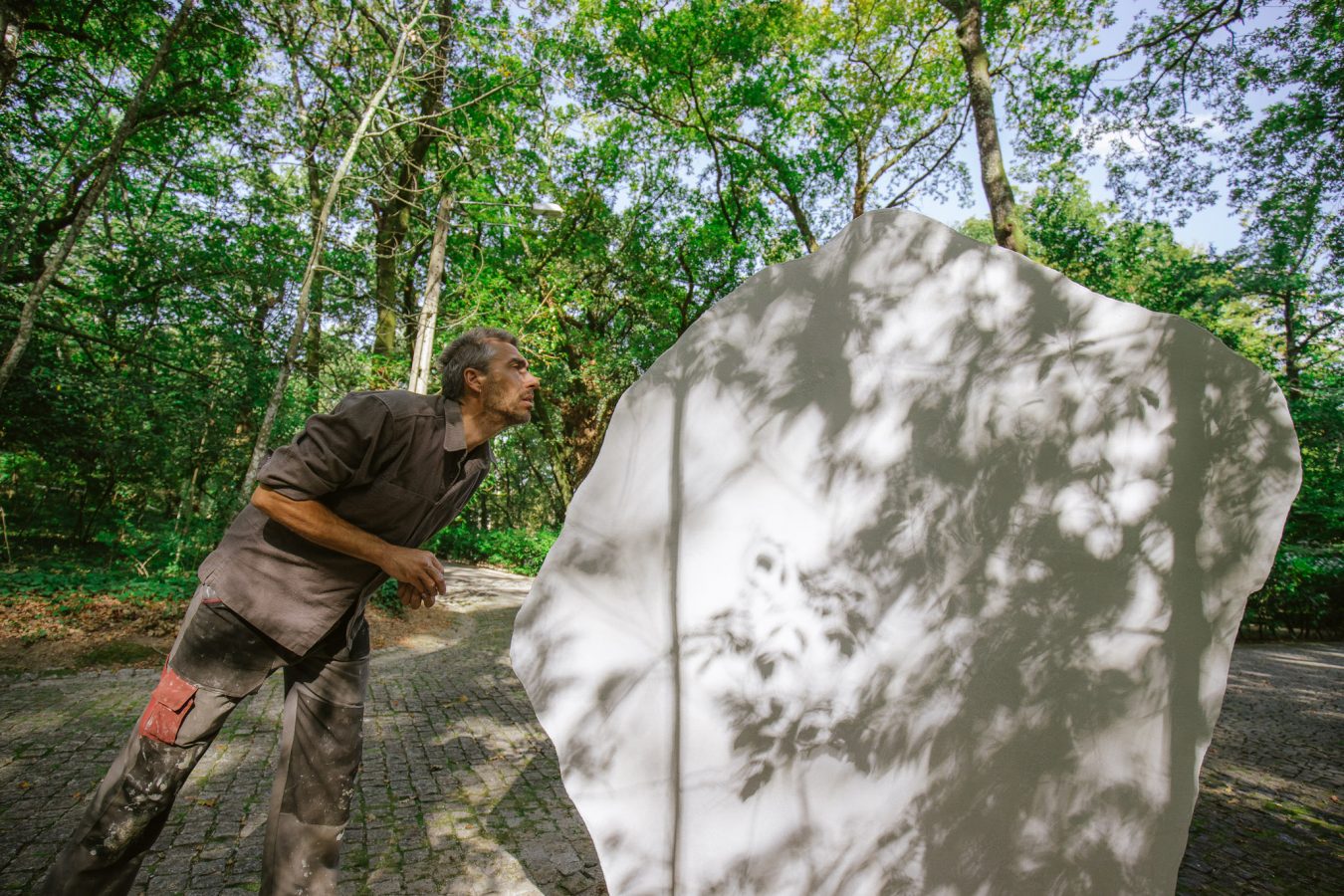
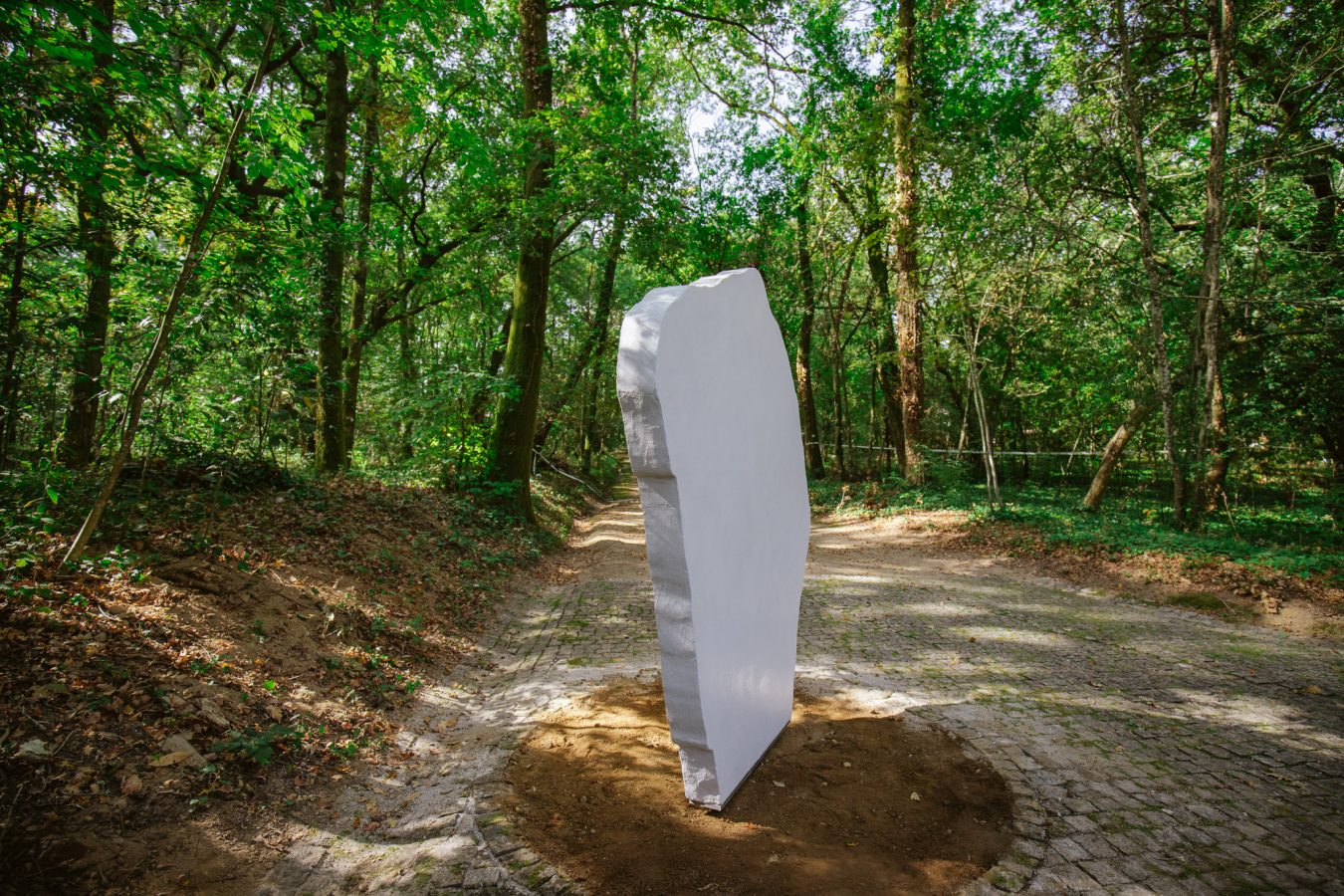
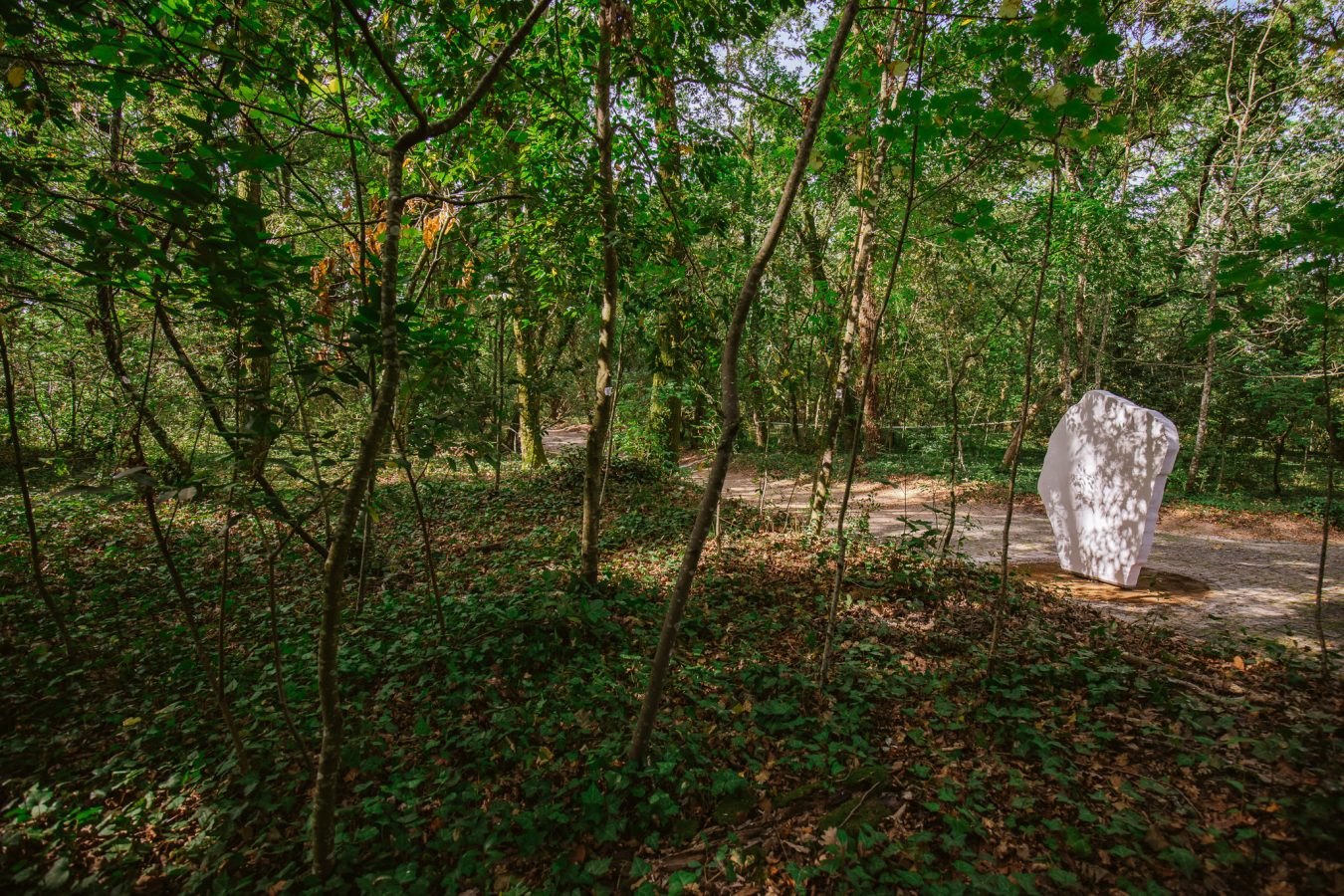
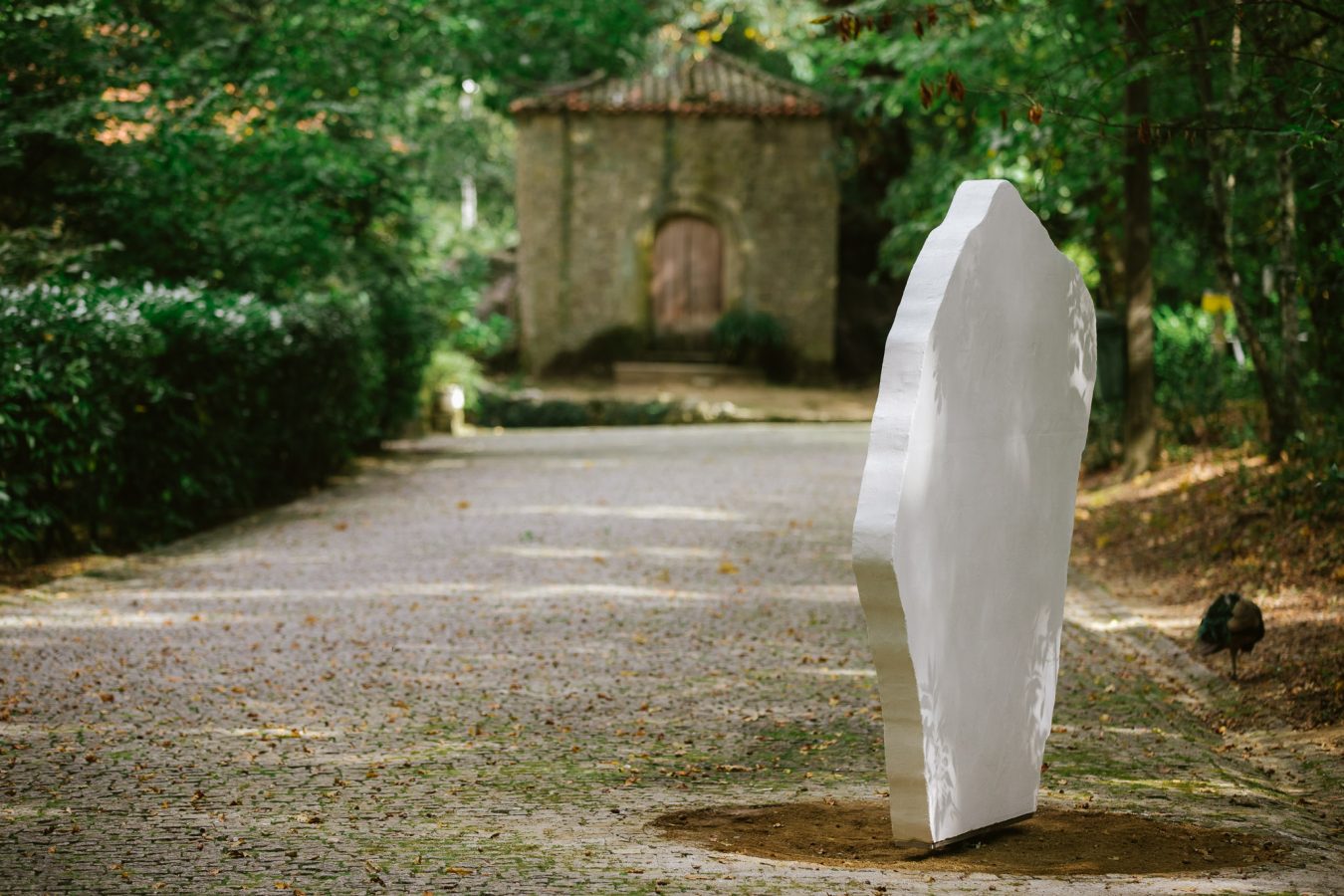
The People’s Stone
From mountain ranges to monoliths, stelae to milestones, naturally formed and hand-carved markers have been used as physical tools of reference, from gauging where we are, to saying how far we have to go, to communicating who has come before us. In contemporary times, carved stone forms are used less often, replaced by an increasing portable type-based language(s), fulfilling this function of practical and cultural, visual communication. Graffiti, one form of “marking” and mark making, also a tool for communication and artistic expression, can be argued to follow in this lineage: a name, an expression, a code and/or a message left to be received by another. These “signs,” are now placed on objects, instead of being of the objects, except where sculptural and/or public artworks bridge between the past and the present.
The artist Steven Barich—motivated by previous stone-inspired art works and the stoney landscape of Portugal, in context of the Fontelo parks own geology within an urban environment—with the art work The People’s Stone aims to juxtapose the monolithic plus artistic gesture with the signature “tag” or “throwie,” unique reference marks made in collaboration over time, during the POLDRA project exhibition. The sculpture, a human-size stele as public-participatory surface, will be installed as an reference-marker of where we are now, and aesthetically, stating who we are in this moment.
Technical Details
The People’s Stone, 2019
Author: Steven Barich
200 x 200 x 13 cm
Cement-stone boards, steel armature, mortar
Fontelo Woods / 40.6581130, -7.9004150
Author's Word
Steven Barich
Steven Barich is an American-born artist and educator now living in Portugal. His art practice employs themes and/or rules to directly guide the outcome of the image or object—such that can be described with the words: reverberation, abstract, negative mass, habitual pattern, impossible structure, broken-into-one. The forms manifest in drawing, collage, video and sculpture, commonly presented side-by-side in a single exhibition. Steven Barich studied at the California College of Arts & Crafts (now CCA) in Oakland, California, USA, later earning an MFA in Painting and Sculpture from Mills College in Oakland, California. He has exhibited at numerous spaces from artist-run alternative exhibitions to city museums, with periodic interventions performed in the public space.
Exhibitions include solo shows at Galeria Saguão (Viseu, PT), Branch Gallery (Oakland, USA), Rowan Morrison Gallery (Oakland, USA) and The Compound Gallery (Oakland, USA), as well as group exhibitions at/for Objectos Experimentais (Viseu, PT), Southern Exposure (San Francisco, USA), The Turchin Center for the Arts (Boone, NC, USA) The Orange County Center for Contemporary Art (Los Angeles, USA), the Museum Boijmans van Beuningen (Rotterdam, NL), TENT Center for Contemporary Art (Rotterdam, NL) and Curators without Borders (Berlin, D). In addition to exhibiting work, Barich has organized and curated exhibitions in partnership and independently in Rotterdam (NL), Oakland (CA, USA) and San Francisco (CA, USA).
Barich has been artist-in-residence at Air Bergen, USF Verftet (Norway), Stichting B.a.d., Rotterdam (NL) and Works/San José, San José (USA). He has tutored in the MFA Thesis program and Piet Zwarte Institute, Rotterdam (NL), Extended Education Faculty/Mentor in Studio Painting at the California College of the Arts (SF, CA, USA) and PT Faculty at Diablo Valley College (CA, USA) in the Studio Painting department. Publications of works and writing can be found in issues and online of ZYZZYVA – A journal of arts & letters (San Francisco, CA, USA), the East Bay Express (Berkeley, CA, USA), Art Ltd. Magazine (online), Achiote Press (USA), True-Eye Digital Showcase (online), Art World Digest (NY/LA, USA), Nomads + Residents (Rotterdam, NL), Urban View (Bay Area, CA, USA) and ArtWeek (Oakland/San Jose, CA, USA).
More
Location
Fontelo Woods
Viseu, Portugal
40.6581130, -7.9004150
